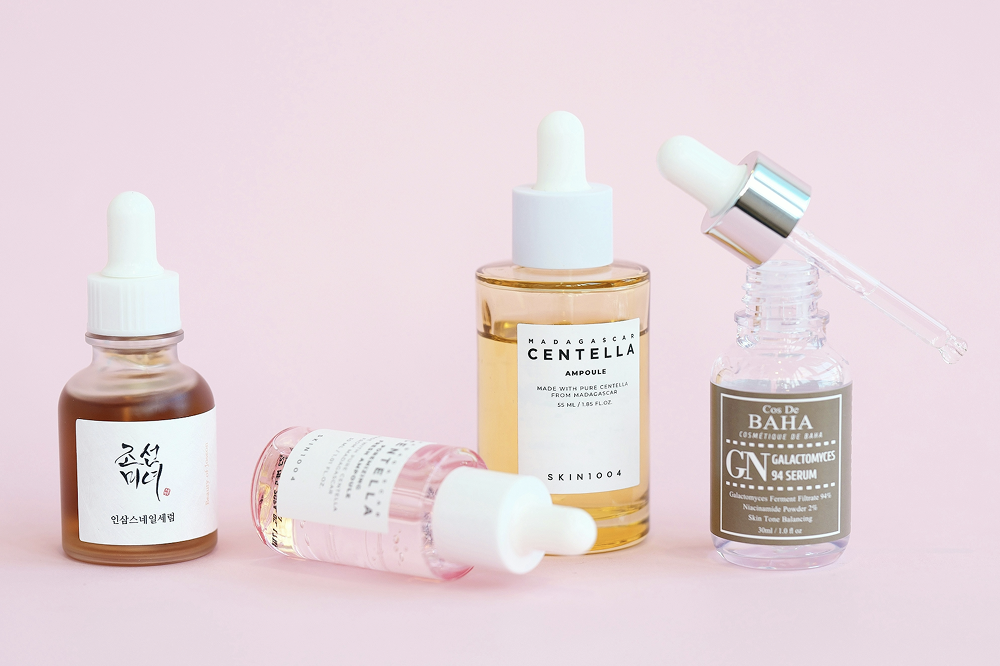The new year is upon us, and 2024 is set to bring brands new platforms to monitor, new counterfeiting strategies to learn about, and new laws taking effect around the world.
Here’s our overview of the most important trends and challenges to focus on in 2024:
Trend #1 Growth in Live Shopping
Live shopping, where products are promoted and sold through live video streams, has become a major e-commerce trend.
This format, favored by influencers and social media platforms, provides a shopping experience that works especially well in today’s integration of ecommerce into entertainment platforms.
However, it poses a significant challenge for brands, as counterfeiters exploit this medium to quickly showcase and sell fake products, making it difficult for brands to track and enforce IP rights.
The transient nature of live content and the ease of setting up new accounts on these platforms further complicate monitoring efforts.
Trend #2 Desktop Cloaking
Desktop Cloaking is a sophisticated technique used by counterfeiters to evade detection and to have reported items not removed by platforms.
It involves showing legitimate products to viewers on desktop computers, often used by brand protection teams, while simultaneously displaying counterfeit goods to users on mobile devices. This tactic capitalizes on the different browsing behaviors and tools used by consumers and brand monitors.
The challenge for brands lies in adapting their monitoring techniques to effectively detect and address these deceptive practices across multiple viewing platforms, while also ensuring that filed reports can show and explain the infringements clearly.
Trend #3 Deepfakes
The use of AI to create hyper-realistic photos and videos, known as deepfakes, is a growing concern in brand protection.
Deepfakes have caught significant public attention in recent years with their ability to impersonate public figures, such as famous actors, musicians, and politicians.
But now, the deepfake risk has spread to businesses. As the technology behind deepfakes has improved, the likenesses of corporate leaders and influencers can now be replicated with startling accuracy.
The implications for brands are serious. Customers are being tricked into phishing scams, being led to pages selling counterfeit goods, or believing defaming misinformation.
The challenge is not only in identifying these deepfakes but also in developing strategies to protect and defend the brand's image and the integrity of its representatives, while also keeping loyal customers safe.
Trend #4 TikTok Shop
TikTok has evolved from a social-video app to include its own ecommerce platform, TikTok Shop. We’ve previously explained how counterfeiters use TikTok to promote counterfeits, and now there’s a more direct route between showing fake items and selling them.
TikTok Shop allows sellers to reach a vast audience, made up of over a billion users, faster than almost anywhere else. The platform's unique format, blending entertainment with shopping, makes it especially tricky for brands to monitor effectively, requiring specialized strategies to distinguish authentic products from fakes.
Trend #5 Temu
Temu, emerging as a popular online marketplace, has gained significant attention for its low-cost strategy, rapidly acquiring a large user base in a short time. This marketplace, focused on offering products at the lowest possible prices, creates an environment where counterfeit goods can thrive under the guise of affordability.
For brands, the challenge is twofold: ensuring that their genuine products aren't devalued by cheaper imitations, and continuously monitoring the platform for counterfeit listings that could mislead customers and damage the brand's reputation.
Temu's aggressive pricing policies make it a hotspot for counterfeit activity, requiring brands to be extra vigilant and proactive in protecting their intellectual property.
Trend #6 Shein
Shein has risen as a prominent player in the online fashion retail space over the past few years. Having been founded as its own fashion label, Shein now operates both as a brand and a third-party marketplace.
Shein’s lax approach to IP has led to numerous IP disputes. Uniqlo, Dr Martens, Levi’s, and Ralph Lauren are just some of the fashion brands that have sued Shein over IP matters. Knockoff culture is only becoming more pervasive in the fashion industry, and Shein is set to continue its perpetration through this year.
As Shein’s third-party marketplace arrives, this spells trouble for legitimate brands. If their approach to the IP of other brands remains consistent, then counterfeits will be set to thrive in 2024.
Trend #7 Digital Services Act
The EU Digital Services Act represents a significant overhaul in the way online services are regulated within the European Union. Primarily aimed at combating harmful online activities, including IP infringements, the DSA introduces stringent new requirements for digital platforms.
The DSA mandates a number of changes, including:
- Proactively identifying and addressing illegal content, including IP violations.
- Simplifying the submission of infringement complaints
- Disclosing their content moderation practices and handling of complaints.
- Tracing infringing sellers on their platform
In short, providers of online services will have to adopt this set of content moderation and dispute resolution processes that allow for improved compliance with IP rights. Platforms that don’t meet the demands of this legislation can face sanctions up to 6% of global annual turnover.
Brand owners and consumers will have the support of Digital Services Coordinators who can run inspections and penalize infringements with fines or services suspensions.
Trend #8 SHOP SAFE Act
The USA's proposed SHOP SAFE Act could mark a pivotal shift in the responsibilities of online marketplaces regarding the sale of counterfeit goods, especially those posing health or safety risks.
If the legislation is passed, The SHOP SAFE Act would require marketplaces to be more vigilant in vetting sellers and removing infringing items. Brands will have to work closely with these platforms to ensure compliance and leverage the act to enhance consumer safety and protect their IP.
The legislation also essentially rewards platforms that make efforts to meet the new demands, even if mistakes are made. The bill will incentivize platforms to implement a series of moderation controls and will grant them a “safe harbor” from liability when they can demonstrate:
- The took sufficient efforts aimed at screening and vetting sellers and listings,
- They implemented policies aimed at sanctioning repeat counterfeiter sellers, and
- They put in place processes to ensure consumers have all relevant seller information when they make their purchases.
The SHOP SAFE Act was first introduced last year, alongside the INFORM Consumers Act, and its implementation would further strengthen the protection of IP in the United States.
Trend #9 Revised Trademark Laws in China
China's proposed amendments to its trademark laws are set to significantly impact how brands protect their IP within the country. These changes aim to combat trademark infringement and misuse more effectively.
These changes focus on three main areas of trademark law:
- Establishing an obligation to use registered trademarks, with statement of use required every 5 years
- Introducing an anti-dilution provision, seeking the protection of well-known trademarks
- Prohibition of registration and use of trademarks filed in bad faith
With these amendments, China is tightening its IP protection framework. The news should come as a major positive for brands, as China has shown a tenuous respect for foreign IP in the past. But, these laws may well improve the IP landscape in China by reducing trademark squatting, and enforcing respect of existing trademarks.
This could lead to a decrease in counter-notifications to online counterfeit reports based on bad faith registrations. While trademark dilution laws generally protect the IP of large companies, the benefits may expand over time to benefit brands of all sizes.
Trend #10 Revenue Recovery
Revenue Recovery has become a key strategy in brand protection, allowing brands to pursue financial restitution directly from counterfeiters. This marks a major shift away from reactive reporting of IP infringements and towards a more proactive and financially focused approach.
The program offers businesses more direct impact for their brand protection efforts, such as:
- Legal action for damages, allowing Brands to legally pursue counterfeit networks to reclaim financial losses.
- Asset freezing and confiscation, including finances and physical items, to disrupt counterfeiting operations.
Not only does Revenue Recovery provide businesses with a measurability to their brand protection efforts, but also a demonstrable positive ROI on spending. Beyond the restoration of a brand’s reputation and improved sales numbers, businesses targeted by counterfeiters can now see money placed right back into their bank accounts.
Stay up to date on the latest IP Protection content from MarqVision.
4 Enforcements a Week to 400: Scale Brand Safety with Marq AI

Don’t Just Find Counterfeits. Dismantle the Entire Network.

.png)
Discover the latest trends and challenges in IP protection

Take Control of Your Trademarks with MARQ Folio

Renew and Manage Your Trademarks Easily With MARQ Folio

We’re waiting to hear from you

See the best brand protection solution in action

Don’t let piracy steal your growth

Talk to us about your brand protection problems








.png)







